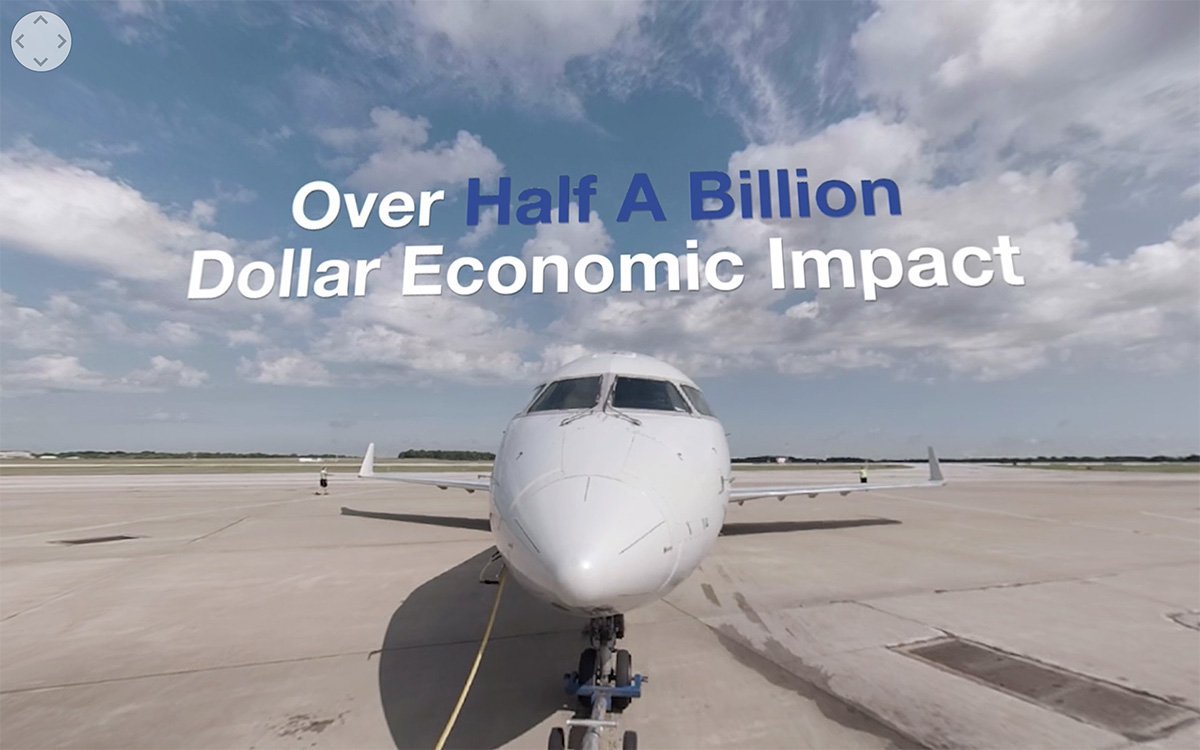Showing Off Your Space with 360 Media
It seems like an important time to remind everyone that 360 media exists (and is more accessible than ever!) Even though you can’t safely have large groups of people visit you, 360 photo and video offer you a really cool way to show off your space in an exciting and interactive way - 100% remotely. It has so many possible use cases in these strange times.
Showing Off Your Space with 360 Media
If you would normally walk new employees through other parts of your facility to help them understand your process, that could be hard to do currently. One client we work with has 360 photos of each lab space in their facility, which allows them to take anyone they want on a pretty cool virtual tour from anywhere. This could have a lot of different uses in the world of virtual tours. Be it onboarding or just showing off a space you can’t openly invite people to walk around in, 360 media is an awesome way to teleport the viewer into a whole new room and allow them to explore freely. I should also mention this could be as simple as just taking the 360 pictures, optimizing them and then posting them or a slightly more complex process of creating a video with a bunch of fun graphics and callouts that give information on things in the space! I am a very big fan of the latter, because it really takes the experience to the next level. Instead of just standing in a room, now we have the ability to include facts and information popping up in fun, interactive ways!

The 360 Media Tour of the Akron-Canton Airport with text overlays that gave facts about the airport to viewers.
Grabbing Attention with 360 Media
Something to always consider when creating a 360 piece is the timing and placement of graphic elements. If things are coming up in sequence, maybe we use that sequence to draw the viewer to a certain part of our image. This is something we have to consider as content creators, because normally people just view the awesome video you put out and see 100% of it right away. With 360 media you can’t control where the viewer is looking at any given time! It is a strange concept to think about. We could spend 40 hours working on an intricate 3D animation that floats in our 360 space and the viewer could just decide to look in the complete opposite direction of it. So, we work to find the balance between the viewers freedom to explore, and our desire for our content to be viewed in the best possible way. It leads to a lot more planning and consideration than normal edits, as we want to be sure we aren’t accidentally hiding important parts of the piece! But luckily, there is always a way to make sure we still leading the viewers attention and create a memorable piece they are sure to come back to time and time again. No matter how we do it, it is still a cool experience for the viewer, and a unique one to boot.
Viewer Engagement
Viewer Interaction
Viewers are more likely to stop on a 360 photo or video during their scroll and interact with it. First, because they know there is something to interact with, which is something traditional media cannot offer. And second, they know there are parts of the image they can't currently see and are inclined to move around in the space and find out what's hiding.
Repeat Views
Unlike traditional media views, you can't see the whole 360 space in one view. This means viewers are likely to repeat watch and try to look at different areas each time to try to get the whole video story. Repeat views generally mean more interest, more engagement and more retention of your brand's message.
Increased Visibility
As far as visibility and user experience goes, 360 opens a lot of doors. You can not only allow more people into your space, you can allow groups of people that might not have had access to you before. Anyone can interact and engage with your space from anywhere in the world in one click. No passports required.
More Accessible Than Ever
The tech is not necessarily new, but it becomes more accessible every day. The cost of creating 360 media is on par with traditional options and most platforms now now accept 360 natively as a standard upload option. This is rapidly lowering the barriers and allowing more people to see and use the media than ever before.




